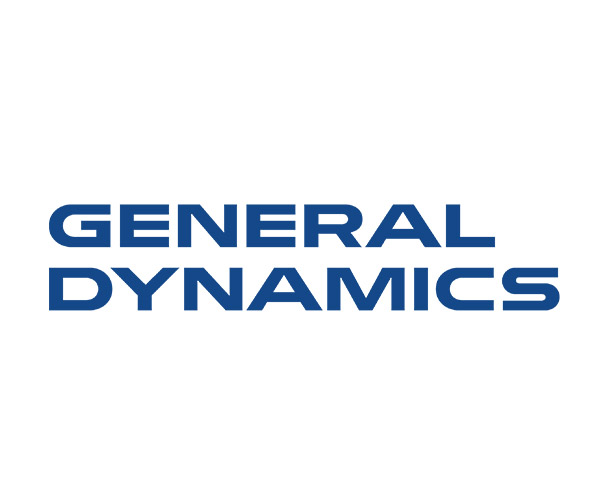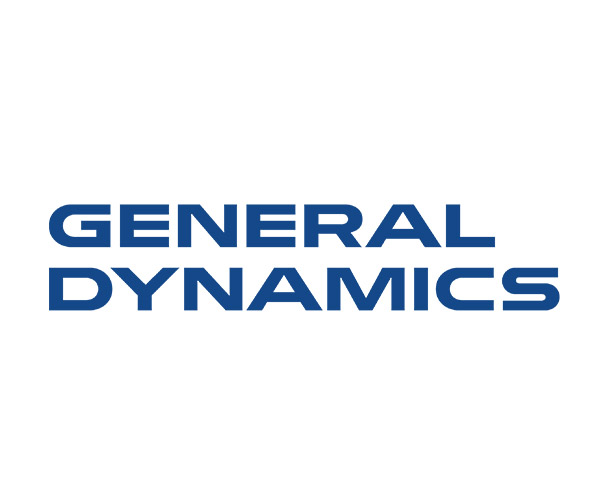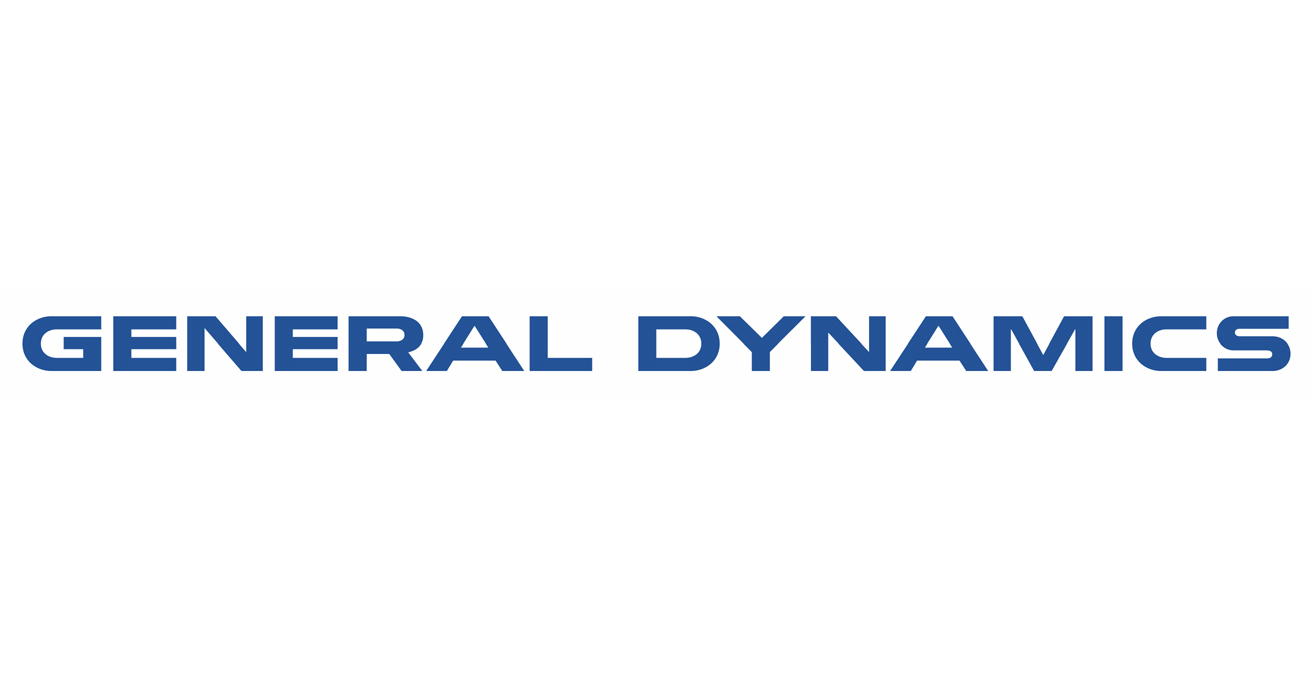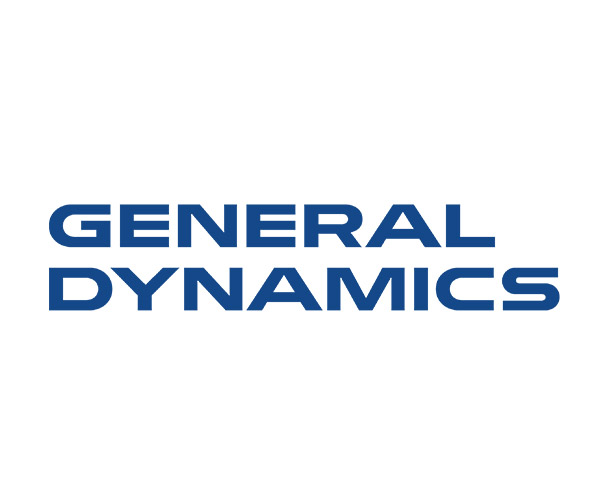General Dynamics Corporation (NYSE:GD) Earnings Preview

- Analysts predict an EPS of $4.13 and revenue of $12.8 billion for the upcoming quarter.
- The Aerospace segment, driven by Gulfstream jet deliveries, is expected to generate significant sales, with an estimated revenue of $4.2 billion.
- Financial metrics indicate a P/E ratio of 20.35 and a debt-to-equity ratio of 0.49, showcasing the company's market valuation and financial health.
General Dynamics Corporation, listed on the NYSE:GD, is a major player in the aerospace and defense industry. The company is known for its diverse range of products and services, including Gulfstream jets and military vehicles. As it prepares to release its quarterly earnings on January 29, 2025, analysts are closely watching its performance metrics.
Wall Street analysts estimate General Dynamics' earnings per share (EPS) to be $4.13, with projected revenue of approximately $12.8 billion. The company's earnings are expected to benefit from increased revenues across most segments, reduced interest expenses, and a strong operating margin. Notably, the Aerospace segment is projected to post solid sales, driven by the delivery of Gulfstream jets, especially the G700 aircraft, with an estimated revenue of $4.2 billion.
Despite a history of an average negative earnings surprise of 1.87% over the past four quarters, General Dynamics is anticipated to report an increase in earnings for the quarter ended December 2024. The upcoming earnings report is expected to show quarterly earnings of $4.23 per share. The stock's movement will largely depend on whether the actual results exceed or fall short of these estimates.
General Dynamics' financial metrics provide insight into its market valuation. The company has a price-to-earnings (P/E) ratio of approximately 20.35 and a price-to-sales ratio of about 1.61. The enterprise value to sales ratio is around 1.81, while the enterprise value to operating cash flow ratio is approximately 26.45. These figures reflect the company's valuation in relation to its sales and cash flow.
The company's financial health is further supported by an earnings yield of about 4.91% and a debt-to-equity ratio of approximately 0.49, indicating a moderate level of debt compared to equity. Additionally, the current ratio is about 1.32, suggesting that General Dynamics has a reasonable level of liquidity to cover its short-term liabilities.
| Symbol | Price | %chg |
|---|---|---|
| RTX.BA | 52525 | 0.33 |
| LMT.BA | 35140 | 0.28 |
| 329180.KS | 525000 | -0.57 |
| 012450.KS | 970000 | 2.06 |

General Dynamics Corporation (NYSE: GD) Sees Positive Analyst Sentiment and Upcoming Earnings Report
- The consensus price target for General Dynamics Corporation (NYSE: GD) has increased over the past year, indicating analyst optimism.
- General Dynamics is expected to report strong earnings of $3.72 per share and revenue of $12.56 billion for the upcoming quarter.
- The company benefits from increased Gulfstream deliveries and strategic U.S. government investments, enhancing its defense sector position.
General Dynamics Corporation (NYSE: GD) is a major player in the aerospace and defense industry, operating through four main segments: Aerospace, Marine Systems, Combat Systems, and Technologies. The company is renowned for its business jets, nuclear-powered submarines, combat vehicles, and advanced IT solutions, catering to both military and civilian markets.
The consensus price target for General Dynamics' stock has shown a positive trend over the past year. Last month and last quarter, the average price target was $378.67, while a year ago, it was $325.92. This upward trend indicates growing optimism among analysts about the company's future performance.
General Dynamics is set to release its earnings report on October 24th, with analysts projecting earnings of $3.72 per share and revenue of $12.56 billion. This announcement coincides with the expiration of options on the same day. Despite the positive outlook, analyst Charles Minervino from Susquehanna has set a lower price target of $285 for the company.
The company's strong position in the defense sector, driven by increased Gulfstream deliveries and demand, contributes to its robust third-quarter earnings and revenue projections. The U.S. government's strategic investments in key American companies, including General Dynamics, further bolster its prospects. This approach aims to secure vital supply chains and maintain a competitive edge globally.
General Dynamics has a history of surpassing earnings expectations, and it appears poised to do so again in its upcoming report. Broker upgrades have fueled optimism, leading to an upgraded rating for the company. Analyst Charles Minervino's price target of $285 reflects confidence in General Dynamics' alignment with national priorities and potential for solid returns.

General Dynamics Corporation (NYSE:GD) Anticipates Strong Quarterly Earnings
- General Dynamics Corporation (NYSE:GD) is expected to report an EPS of $3.73 and revenue of $12.53 billion for the third quarter.
- The company's performance is driven by increased Gulfstream aircraft deliveries and robust demand in the defense sector.
- Financial metrics such as a P/E ratio of 22.20 and a debt-to-equity ratio of 0.45 reflect General Dynamics' market position and financial health.
General Dynamics Corporation, listed as NYSE:GD, is a major player in the aerospace and defense industry. The company is known for its diverse operations, including the production of Gulfstream aircraft and advanced defense systems. As it prepares to release its quarterly earnings on October 24, 2025, analysts expect an EPS of $3.73 and revenue of $12.53 billion.
The anticipated strong performance in the third quarter is largely attributed to increased Gulfstream aircraft deliveries and robust demand in the defense sector. The Aerospace segment is expected to see significant revenue growth from these deliveries, enhancing the company's overall financial performance. This aligns with the projected revenue of $12.53 billion for the quarter.
In addition to aerospace, the Marine Systems segment is likely to contribute to revenue growth. Advancements in submarine construction and engineering are expected to bolster this segment's performance. Despite potential supply-chain challenges, strong defense spending and vehicle demand are anticipated to support General Dynamics' results.
The company's financial metrics provide further insight into its market position. With a P/E ratio of 22.20 and a price-to-sales ratio of 1.81, the market values General Dynamics' revenue and earnings positively. The enterprise value to sales ratio of 1.99 and the enterprise value to operating cash flow ratio of 19.91 highlight the company's valuation and cash flow efficiency.
General Dynamics' financial health is also reflected in its debt-to-equity ratio of 0.45, indicating a moderate level of debt. The current ratio of 1.36 suggests the company can comfortably cover its short-term liabilities. As the earnings release approaches, investors will closely watch for any earnings surprises, which could impact the stock's movement.

General Dynamics Corp (NYSE:GD) Secures Additional DDG 51 Destroyer Contract
- General Dynamics Corp (NYSE:GD) has been awarded an additional DDG 51 destroyer in a multi-year contract with the U.S. Navy.
- The contract highlights GD's significant role in national defense and its ongoing commitment to defense through its Bath Iron Works division.
- GD's stock price reflects a positive trend with a current price of $312.78, indicating a 0.66% increase.
General Dynamics Corp (NYSE:GD) is a prominent player in the aerospace and defense industry. The company is known for its diverse range of products and services, including combat vehicles, weapons systems, and shipbuilding. It competes with other defense giants like Lockheed Martin and Northrop Grumman. Recently, Shelley Moore Capito participated in a sale transaction involving GD shares, valued between $1,001 and $15,000, on behalf of her spouse.
General Dynamics Bath Iron Works, a division of GD, has secured an additional DDG 51 destroyer in a multi-year contract with the U.S. Navy. This contract, initially awarded in 2023, highlights GD's significant role in national defense. Charles F. Krugh, president of Bath Iron Works, expressed pride in this achievement and acknowledged the team's efforts in enhancing the construction process.
The inclusion of the destroyer in the Fiscal Year 2025 Defense Appropriations Bill, as highlighted by Krugh, underscores the importance of GD's contributions to the U.S. Navy. Bath Iron Works is currently constructing several destroyers, including the Flight IIA Arleigh Burke-class and the Flight III configuration destroyers, showcasing the company's ongoing commitment to defense.
GD's stock is currently priced at $312.78, reflecting a 0.66% increase. The stock has fluctuated between $310.33 and $313.20 today. Over the past year, GD's stock has seen a high of $322.50 and a low of $239.20. The company's market capitalization is approximately $84.14 billion, with a trading volume of 852,118 shares on the NYSE.

General Dynamics Corporation (NYSE:GD) Quarterly Earnings Preview
- Analysts set an EPS estimate of $3.59.
- Revenues for Q2 are expected to reach $12.35 billion, a 3.1% increase, driven by Aerospace and Marine Systems divisions.
- The company's financial health is solid, with a P/E ratio of 20.09, a debt-to-equity ratio of 0.52, and a current ratio of 1.34.
General Dynamics Corporation, listed on the NYSE under the symbol GD, is a major player in the aerospace and defense industry. The company operates through several segments, including Aerospace, Marine Systems, Combat Systems, and Technologies. As it prepares to release its quarterly earnings on July 23, 2025, analysts have set an EPS estimate of $3.59, with projected revenues of $12.35 billion.
The company's second-quarter performance is expected to be bolstered by strong sales in its Aerospace and Marine Systems divisions. Revenues are projected to reach $12.35 billion, a 3.1% increase from the previous quarter. This growth is largely driven by a 2.2% rise in Aerospace sales, particularly from Gulfstream deliveries, and an 8.4% increase in Marine revenue.
Despite challenges in the Combat and Technologies segments due to supply issues and program ramp-downs, General Dynamics is anticipated to report a year-over-year increase in earnings. The Zacks Consensus Estimate suggests quarterly earnings of $3.56 per share. The company's ability to maintain higher operating margins is expected to positively impact overall results.
General Dynamics has a price-to-earnings (P/E) ratio of approximately 20.09, reflecting the market's valuation of its earnings. The price-to-sales ratio is about 1.62, while the enterprise value to sales ratio stands at 1.83. These metrics indicate how the market values the company's sales and overall enterprise value.
The company's financial health is further supported by an earnings yield of about 4.98% and a debt-to-equity ratio of approximately 0.52, suggesting a moderate level of debt relative to equity. Additionally, a current ratio of about 1.34 indicates General Dynamics' ability to cover short-term liabilities with short-term assets.

General Dynamics Corp. (NYSE: GD) Maintains Hold Rating and Optimistic Price Target
- Jefferies maintains a "Hold" rating for General Dynamics Corp. (NYSE: GD) with a raised price target to $325, indicating optimism about Gulfstream's earnings per share.
- The stock price of GD has increased to $299.98, showing resilience with a 52-week high of $316.90.
- General Dynamics plans to webcast its second-quarter financial results on July 23, 2025, providing insights into the company's performance and future prospects.
General Dynamics Corp. (NYSE: GD) is a prominent player in the aerospace and defense industry. The company is known for its diverse range of products and services, including Gulfstream business jets, combat vehicles, and IT services. It competes with other industry giants like Lockheed Martin and Boeing. On July 9, 2025, Jefferies maintained a "Hold" rating for GD, with a stock price of around $299.94.
Jefferies raised the price target for GD to $325, indicating optimism about Gulfstream's earnings per share. This positive outlook aligns with the recent stock price increase to $299.98, up by 1.12% or $3.33. The stock has shown resilience, fluctuating between $296.86 and $299.98 today, and reaching a 52-week high of $316.90.
General Dynamics plans to webcast its second-quarter financial results on July 23, 2025. This event will provide insights into the company's performance and future prospects. The webcast will be accessible on the company's website, with a replay available for those unable to attend the live session.
The company's market capitalization is approximately $80.51 billion, reflecting its significant presence in the industry. With a trading volume of 959,342 shares on the NYSE, GD remains an active and closely watched stock. Investors and analysts will be keenly observing the upcoming financial results for further guidance.

General Dynamics Corporation (NYSE:GD) Earnings Preview
- General Dynamics is expected to report an EPS of $3.47, a 20.5% increase year over year.
- Projected quarterly revenue is approximately $11.95 billion, a 10.7% rise from the previous year.
- The Aerospace Unit is anticipated to see robust sales, especially from Gulfstream G700 jet deliveries, with projected revenues of $2.8 billion.
General Dynamics Corporation, listed as NYSE:GD, is a prominent player in the aerospace and defense industry. The company is known for its diverse range of products and services, including Gulfstream business jets and combat vehicles. As a major defense contractor, General Dynamics competes with other industry giants like Lockheed Martin and Northrop Grumman.
General Dynamics is set to release its quarterly earnings on April 23, 2025, before the market opens. Analysts expect the company to report earnings per share (EPS) of $3.47, reflecting a 20.5% increase from the previous year. The projected revenue for the quarter is approximately $11.95 billion, marking a 10.7% rise year over year.
Despite an average negative earnings surprise of 1.61% over the last four quarters, the upcoming results are expected to show strong performance across all business segments. The Aerospace Unit, in particular, is anticipated to post robust sales, driven by Gulfstream aircraft deliveries, especially the G700 jets. The Zacks Consensus Estimate for the Aerospace segment's revenues is projected at $2.8 billion, a 35.4% increase from the same quarter last year.
The stock's movement will largely depend on whether the actual results surpass expectations. A positive earnings surprise could lead to a rise in the stock price, while a miss might result in a decline. Changes in earnings estimates are crucial as they can influence investor reactions to the stock, as highlighted by empirical research.
General Dynamics has a price-to-earnings (P/E) ratio of 19.75 and a price-to-sales ratio of 1.54, indicating the market's valuation of its sales. The company's debt-to-equity ratio is 0.48, showing a moderate level of debt compared to equity. The current ratio is 1.37, reflecting the company's ability to cover short-term liabilities with short-term assets.

General Dynamics Corporation (NYSE:GD) Earnings Preview
- General Dynamics is expected to report an EPS of $3.47, a 20.5% increase year over year.
- Projected quarterly revenue is approximately $11.95 billion, a 10.7% rise from the previous year.
- The Aerospace Unit is anticipated to see robust sales, especially from Gulfstream G700 jet deliveries, with projected revenues of $2.8 billion.
General Dynamics Corporation, listed as NYSE:GD, is a prominent player in the aerospace and defense industry. The company is known for its diverse range of products and services, including Gulfstream business jets and combat vehicles. As a major defense contractor, General Dynamics competes with other industry giants like Lockheed Martin and Northrop Grumman.
General Dynamics is set to release its quarterly earnings on April 23, 2025, before the market opens. Analysts expect the company to report earnings per share (EPS) of $3.47, reflecting a 20.5% increase from the previous year. The projected revenue for the quarter is approximately $11.95 billion, marking a 10.7% rise year over year.
Despite an average negative earnings surprise of 1.61% over the last four quarters, the upcoming results are expected to show strong performance across all business segments. The Aerospace Unit, in particular, is anticipated to post robust sales, driven by Gulfstream aircraft deliveries, especially the G700 jets. The Zacks Consensus Estimate for the Aerospace segment's revenues is projected at $2.8 billion, a 35.4% increase from the same quarter last year.
The stock's movement will largely depend on whether the actual results surpass expectations. A positive earnings surprise could lead to a rise in the stock price, while a miss might result in a decline. Changes in earnings estimates are crucial as they can influence investor reactions to the stock, as highlighted by empirical research.
General Dynamics has a price-to-earnings (P/E) ratio of 19.75 and a price-to-sales ratio of 1.54, indicating the market's valuation of its sales. The company's debt-to-equity ratio is 0.48, showing a moderate level of debt compared to equity. The current ratio is 1.37, reflecting the company's ability to cover short-term liabilities with short-term assets.







